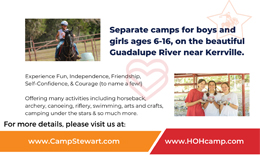Kids enjoy being outside in the summer – riding bikes, swimming, playing at the park and watching fireworks. Unfortunately, more time outside can provide more opportunities for injury. According to a recent report, activities most frequently associated with summer injuries to kids are biking, swimming and playground activities. Use the following checklists to help you prepare for an injury-free, kid safe summer.
Safe Biking
Bikes are a leading cause of emergency room visits for children ages 5 to 14 years old. Start with this basic bike safety checklist to help keep your child safe.
Make sure your child wears a bike helmet. Correctly wearing a properly-fitted helmet protects against brain and head injury. Check the helmet for a Consumer Product Safety Commission (CPSC) sticker. If it doesn’t have one, get another helmet that does. The helmet should fit snugly and not move side to side. It should sit low on the forehead, about 1 to 2 finger-widths above the eyebrow. When fastened, you should not be able to get more than one finger under the chin strap. Get a new helmet if it is dropped or your child takes a spill while wearing it.
- Check the tire pressure. Check the chain. Clean and oil as needed.
- Inspect the seat and handlebars; tighten if needed.
- Test the brakes to make sure they work and don’t stick.
- Put reflectors on the bike and the child’s helmet. Also consider adding a flashing device to increase visibility.
- Add a tall flag to low tricycles or riding toys.
- Don’t let your child wear loose clothing or untied shoe strings that could get caught in the wheels. Don’t allow your child to wear headphones while riding.
- Teach your child the rules of the road and how to use hand signals.
Safe Around Water
The Centers for Disease Control (CDC) recommends the following steps for keeping children safe when they are around or in the water.
- Make sure your child learns swimming basics – how to float and how to move through the water.
- Learn CPR for both adults and children. Keep your skills current.
- Watch children around or in the water at all times. This includes bathtubs, wading pools, hot tubs and water playgrounds. Adults in charge of watching should avoid distractions. Some distractions are talking with other adults, looking at your phone or reading a book.
- Protect your child and others from germs that can make swimmers sick. Most germs are killed by pool disinfectants, but certain germs aren’t. Don’t let your child swim if she has diarrhea. Take your child out of the pool every hour for a bathroom break. Change diapers away from poolside. Make sure your child knows not to pee or poop in the water or swallow the water. Remember to shower for at least 1 minute before getting in the water to rinse off any germs that might be on the body.
- Insist that your child wear a life jacket when in and around lakes, oceans and other bodies of water – even if she knows how to swim. Weak swimmers should wear a life jacket in and around pools.
- Ensure that your child cannot access a pool without your knowledge. All pools should be fenced on all sides, with self-latching and self-closing gates. The fence should separate the pool from the house and play areas.
Safe on the Playground
Falls are a common cause of injury for children of all ages. Falls can cause traumatic brain injury, fractures and other injuries. On public playgrounds, more children are injured when playing on monkey bars and climbing equipment than on swings and slides. Here are a few safety tips:
- Choose a playground that has a proper protective surface, like tire crumb or mulch—not dirt or grass.
- Look around at the equipment to make sure it is safe. Equipment should not be rusty, broken, or have missing pieces or sharp edges.
- Insist that your child use the equipment as designed. For example, she should use the swing set for swinging in the seat, as opposed to using it as a jungle gym and climbing up to the top bar.
- Supervise children so that they use equipment designed for their age range. Young children should stay off equipment built for older children. Don’t allow older children to engage in rough play on equipment designed for younger children.
Safe with Fireworks
The American Academy of Pediatrics recommends enjoying fireworks at community displays run by professionals instead of buying and using fireworks at home. This is because all types of consumer fireworks have been associated with severe burns and serious injuries. Even sparklers are dangerous, particularly when used by younger children. Sparklers can reach temperatures of over 1000 degrees! The best way to stay safe around fireworks is to leave it to the professionals.
Brenda Schoolfield is a medical writer and editor who lives in Austin. Sugar, her cocker spaniel, and sometimes a rescue foster dog or two keep her company while she writes.


















